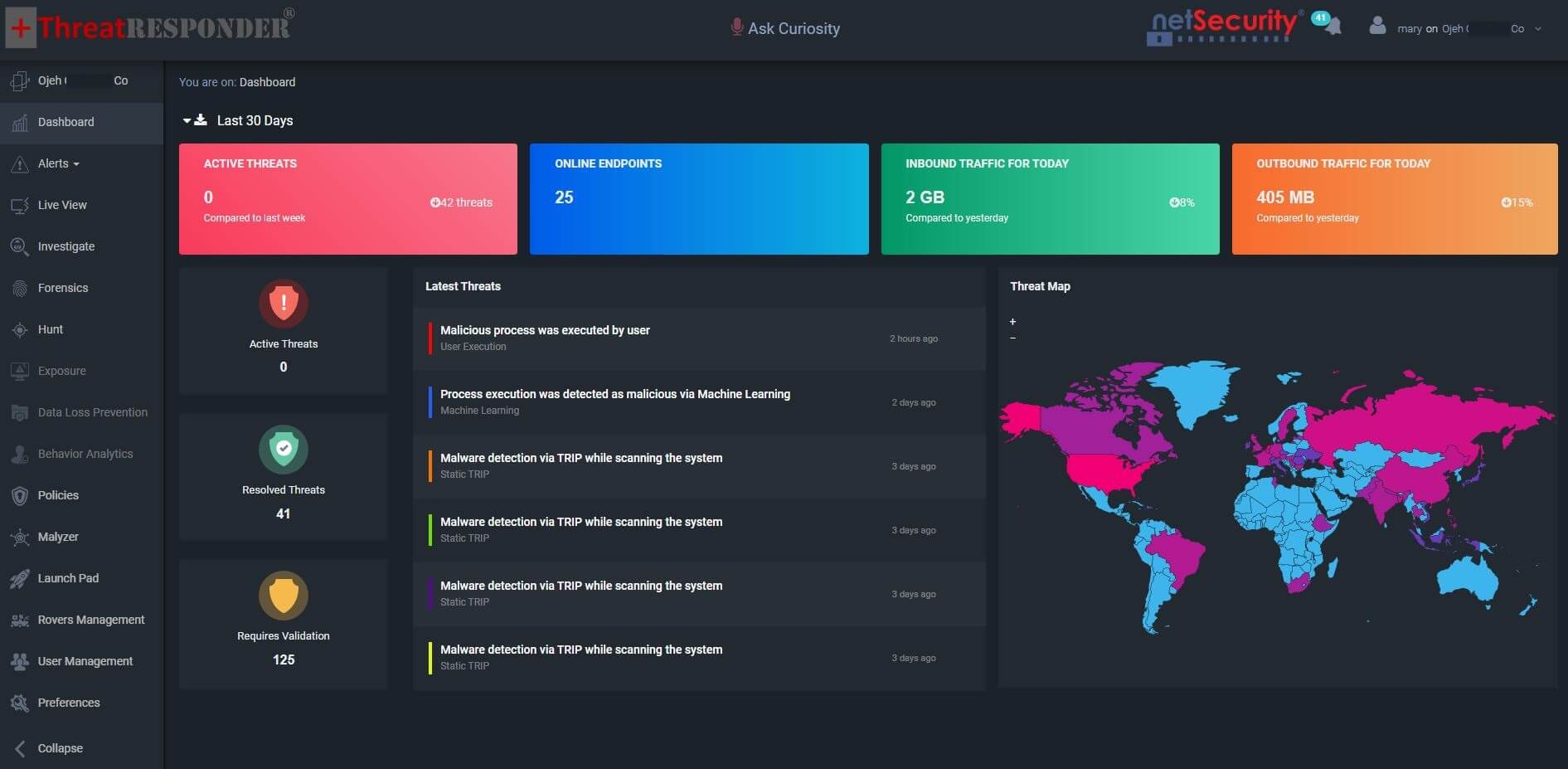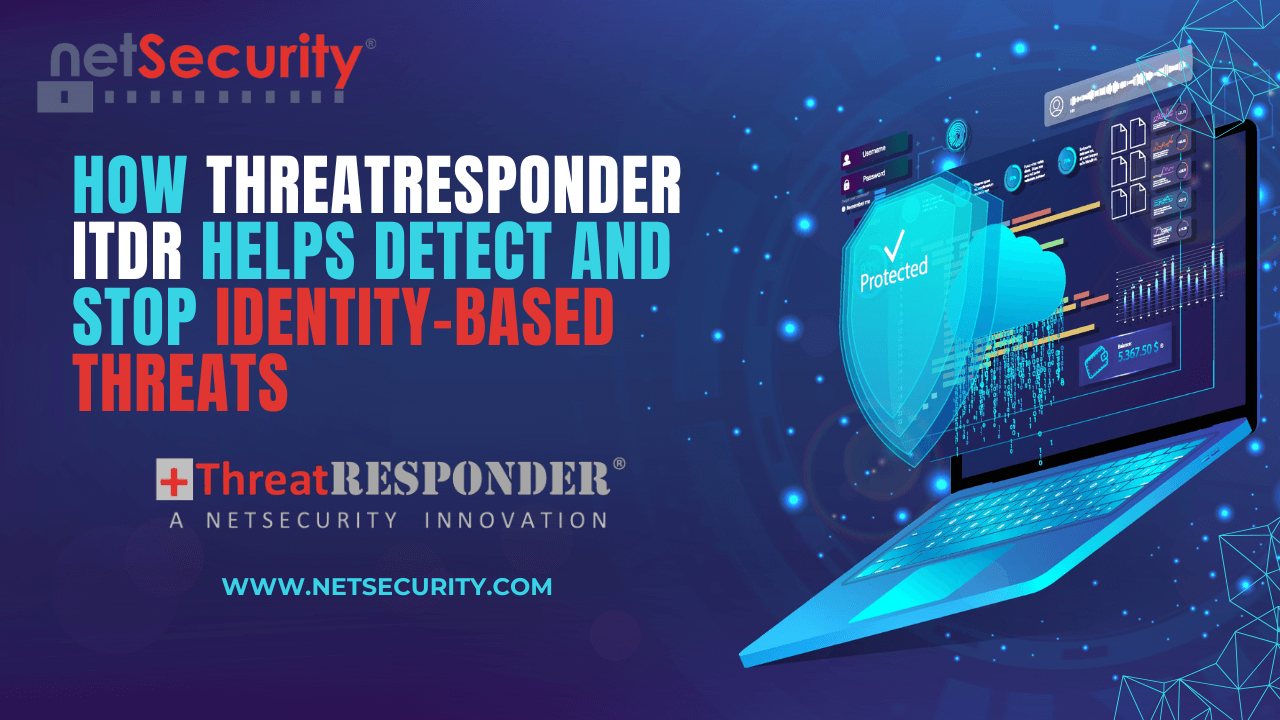How ThreatResponder ITDR Helps Detect and Stop Identity-Based Threats
Understanding the Modern Identity Threat Landscape
In today’s cyber battlefield, identity has emerged as the most critical attack surface. While traditional perimeter defenses and endpoint protections are still important, attackers increasingly focus on compromising user and service identities to gain persistent access and escalate privileges inside networks. This shift is not accidental—it’s strategic. Once an attacker has control over a valid identity, they can often move through systems undetected, blending in with legitimate traffic and bypassing security tools that are not identity-aware.
Identity-based attacks come in many forms, from phishing campaigns targeting credentials, to advanced techniques like Pass-the-Hash, Pass-the-Ticket, Golden Ticket attacks, and MFA fatigue. With the rapid adoption of cloud services, hybrid environments, and remote work, the attack surface for identity compromise has expanded dramatically.
Common Attack Vectors in Identity-Based Threats
Credential Theft and Phishing
Phishing remains a dominant method of identity compromise. By luring users into revealing usernames, passwords, or multi-factor authentication codes, attackers can gain the initial foothold they need. These campaigns often use carefully crafted emails or cloned login portals that appear legitimate.
MFA Fatigue Attacks
Multi-Factor Authentication has become a baseline defense, but attackers have found ways to exploit human behavior. In MFA fatigue attacks, attackers repeatedly send authentication requests until a user approves one out of frustration or confusion, granting the attacker access.
Service Account Exploitation
Service accounts often have elevated privileges and lack regular monitoring. Attackers can compromise these accounts to perform lateral movement, data exfiltration, or privilege escalation without triggering alerts.
Lateral Movement via Compromised Credentials
Once inside, attackers leverage stolen credentials to move laterally across systems. They may use Pass-the-Hash or Pass-the-Ticket techniques to reuse authentication tokens, or create new accounts to maintain persistence.
Why Traditional Security Tools Miss Identity-Based Threats
Limited Visibility into Authentication Activity
Many security tools focus on endpoint or network telemetry but have limited insight into identity events such as suspicious logins, privilege escalations, or anomalous MFA activity. Without this data, subtle but dangerous activities often go unnoticed.
Trust in Valid Credentials
Security tools often treat valid credentials as inherently trustworthy. If an attacker is using legitimate credentials—especially from an internal location—they can bypass many detection systems.
Lack of Cross-Platform Correlation
In modern IT environments, identities span on-premises Active Directory, Azure AD, SaaS platforms, and cloud infrastructure. Detecting identity threats requires correlation across all these domains, something traditional tools rarely achieve.
The Role of ITDR in Modern Cyber Defense
Identity Threat Detection and Response (ITDR) has emerged to address these gaps. ITDR solutions focus specifically on detecting, investigating, and mitigating threats targeting user and machine identities. They integrate with identity providers, directory services, and authentication logs to gain deep visibility into authentication patterns, privilege assignments, and anomalous behavior.
Key Capabilities of ITDR Solutions
-
Continuous monitoring of identity authentication events across on-premises and cloud environments.
-
Detection of anomalous logins based on geography, device, or time-of-day patterns.
-
Privilege escalation monitoring and alerting.
-
Automated investigation and response workflows for compromised accounts.
-
Integration with SIEM, SOAR, and EDR platforms for coordinated response.
How ThreatResponder ITDR Helps Detect and Stop Identity-Based Threats
ThreatResponder’s ITDR capabilities were designed with today’s evolving identity threat landscape in mind. It goes beyond traditional detection to provide deep visibility, intelligent analytics, and automated response for identity-related attacks.
Real-Time Identity Monitoring Across Hybrid Environments
ThreatResponder monitors authentication activity across Active Directory, Azure AD, and cloud identity providers in real time. This ensures that no matter where an attacker attempts to log in—from a corporate network, a remote endpoint, or a cloud service—the activity is captured and analyzed.
Behavioral Baselines and Anomaly Detection
By establishing behavioral baselines for each identity, ThreatResponder can detect anomalies that indicate compromise. For example, if a user typically logs in from Toronto during business hours but suddenly attempts to log in from Eastern Europe at 3 AM, the system flags the activity for investigation.
Privilege Abuse and Escalation Detection
ThreatResponder tracks changes to privileges and role assignments, detecting when accounts are granted elevated access unexpectedly. This is crucial for spotting insider threats or attackers attempting to escalate privileges.
Detection of Advanced Identity Attack Techniques
ThreatResponder includes detection logic for Pass-the-Hash, Pass-the-Ticket, and Golden Ticket attacks. It can identify suspicious Kerberos ticket activity, token reuse, and authentication patterns that deviate from normal operations.
Service Account Protection
By continuously monitoring service account activity, ThreatResponder can detect unusual usage patterns, such as a service account being used from an unauthorized host or performing actions outside its normal scope.
Automated Incident Response for Compromised Identities
When a potential compromise is detected, ThreatResponder can trigger automated response workflows—such as forcing a password reset, revoking active sessions, or disabling an account—reducing attacker dwell time from days or weeks to minutes.
Integrated Threat Intelligence
ThreatResponder leverages integrated threat intelligence to correlate login activity with known malicious IP addresses, TOR exit nodes, or adversary infrastructure, adding an extra layer of proactive defense.
Try ThreatResponder Today
Detecting identity-based threats early can mean the difference between a contained incident and a catastrophic breach. By shortening detection and response times, ThreatResponder not only prevents unauthorized access but also protects sensitive data, avoids costly downtime, and ensures regulatory compliance.
Organizations that adopt ITDR with ThreatResponder gain a decisive advantage: they can see threats others miss, stop attackers before they achieve their objectives, and maintain trust with customers and stakeholders.
Identity is now the most targeted and exploited element of the modern IT environment. Attackers understand that once they compromise an identity, they can operate in stealth, bypass defenses, and reach valuable assets quickly. Traditional tools alone are not enough—organizations need identity-focused detection and response.
ThreatResponder ITDR delivers the visibility, intelligence, and automation needed to detect and stop identity-based threats before they cause damage. In an era where the perimeter has dissolved and the identity has become the new security frontier, ThreatResponder stands as a critical line of defense.

Disclaimer
The page’s content shall be deemed proprietary and privileged information of NETSECURITY CORPORATION. It shall be noted that NETSECURITY CORPORATION copyrights the contents of this page. Any violation/misuse/unauthorized use of this content “as is” or “modified” shall be considered illegal and subjected to articles and provisions that have been stipulated in the General Data Protection Regulation (GDPR) and Personal Data Protection Law (PDPL).











